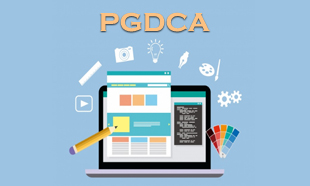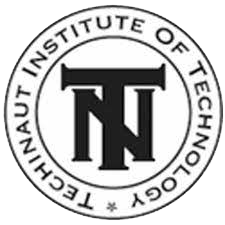78
A Deep Dive into the "POST GRADUATE DIPLOMA IN COMPUTER APPLICATION" Program at DINESH EDUCATION, a Techinaut Institute of Technology Franchise in SEMILIGUDA, ODISHA.
In today's digital era, proficiency in computer applications is essential for success in various professional fields. Recognizing the importance of advanced computer education, Dinesh Education, a franchise of Techinaut Institute of Technology, offers a one-year Post Graduate Diploma in Computer Application (PGDCA). Located in Semiliguda, Odisha, this program aims to equip students with advanced skills and knowledge in computer applications to excel in their careers. This essay provides a detailed overview of the course curriculum, covering its objectives and each topic comprehensively.
OBJECTIVES OF THE COURSE:
The Post Graduate Diploma in Computer Application (PGDCA) at Dinesh Education is designed to achieve the following objectives:
- Basic of Computer: Introduce students to the fundamental concepts of computer science and technology, including hardware, software, and peripherals.
- Computer Appreciation: Foster an understanding and appreciation of the role of computers in modern society, including their impact on various industries and everyday life.
- Computer Organization: Provide insights into the architecture and organization of computer systems, including central processing units (CPUs), memory, storage, and input/output devices.
- Operating System: Familiarize students with different operating systems, their features, and functionalities, enabling them to navigate and utilize various operating environments effectively.
- MS Word Processing: Develop proficiency in using Microsoft Word for word processing tasks such as document creation, editing, formatting, and collaboration.
- MS Spreadsheet Package: Acquire skills in using Microsoft Excel for data organization, analysis, visualization, and automation of tasks through formulas and functions.
- MS Presentation Package: Gain expertise in creating professional presentations using Microsoft PowerPoint, including designing slides, incorporating multimedia elements, and delivering engaging presentations.
- Information Technology and Society: Explore the societal implications of information technology, including ethical, legal, and social considerations related to privacy, security, and the digital divide.
- Introduction to the Internet: Understand the history, evolution, and components of the Internet, as well as its role in facilitating communication, collaboration, and access to information globally.
- Internet Network: Learn about Internet protocols, network infrastructure, and communication technologies, enabling students to comprehend the functioning of the Internet and its various services.
- E-mail: Develop proficiency in using e-mail for electronic communication, including composing, sending, receiving, and managing e-mails efficiently.
- Introduction to Programming: Introduce the fundamentals of programming logic, syntax, and problem-solving techniques, laying the foundation for advanced programming concepts.
- Algorithms for Problem Solving: Explore algorithmic problem-solving approaches and techniques, including algorithm design, analysis, and optimization strategies.
COURSE CURRICULUM:
The PGDCA curriculum is structured to cover a wide range of topics essential for a comprehensive understanding of computer applications. Here's a detailed breakdown of each module:
Module 1: Basic of Computer:- Introduction to Computer Hardware and Software
- Computer Peripherals and Accessories
- Input and Output Devices
- Memory and Storage Devices
- Introduction to Computer Networks
- History and Evolution of Computers
- Applications of Computers in Different Sectors
- Impact of Computers on Society and Economy
- Emerging Trends in Computer Technology
- CPU Architecture and Components
- Memory Hierarchy and Management
- Storage Devices and File Systems
- Input/Output Systems and Devices
- Overview of Operating Systems (Windows, Linux, macOS)
- File Management and Organization
- User Interface and Navigation
- System Configuration and Customization
- Introduction to Microsoft Word Interface
- Document Creation, Editing, and Formatting
- Page Layout and Design
- Collaboration and Review Tools
- Introduction to Microsoft Excel Interface
- Data Entry and Formatting
- Formulas and Functions for Data Analysis
- Charts and Graphs for Data Visualization
- Introduction to Microsoft PowerPoint Interface
- Slide Design and Layout
- Adding Multimedia Elements (Images, Videos, Audio)
- Presentation Delivery Techniques
- Ethical and Legal Issues in IT
- Cybersecurity and Data Privacy
- Digital Divide and Access to Technology
- Emerging Technologies and Future Trends
- Evolution and History of the Internet
- Internet Protocols and Standards
- Web Browsers and Search Engines
- Internet Security and Privacy Concerns
- TCP/IP Protocol Suite
- Network Topologies and Architectures
- LAN, WAN, and Wireless Networks
- Internet Services and Applications
- E-mail Basics and Protocols (SMTP, POP, IMAP)
- E-mail Client Configuration and Setup
- Composing and Sending E-mails
- Managing E-mail Inbox and Filters
- Basics of Programming Languages
- Programming Constructs (Variables, Data Types, Operators)
- Control Structures (Decision Making, Looping)
- Introduction to Integrated Development Environments (IDEs)
- Problem-solving Techniques (Divide and Conquer, Greedy, Dynamic Programming)
- Algorithm Analysis and Complexity
- Searching and Sorting Algorithms
- Data Structures (Arrays, Linked Lists, Stacks, Queues)
CONCLUSION:
The Post Graduate Diploma in Computer Application (PGDCA) offered by Dinesh Education provides students with a comprehensive understanding of computer applications and technology. By covering essential topics such as basic computer concepts, software applications, internet technologies, and programming fundamentals, the course prepares students for diverse career opportunities in the field of information technology. With a blend of theoretical knowledge and practical skills, graduates of the PGDCA program are equipped to tackle real-world challenges and contribute effectively to the rapidly evolving digital landscape. Dinesh Education remains committed to nurturing skilled professionals who can thrive in the dynamic and competitive world of computer applications.
Lectures = 260 HRS
Practical/Tutorials = 260 HRS
Total = 520 HRS


